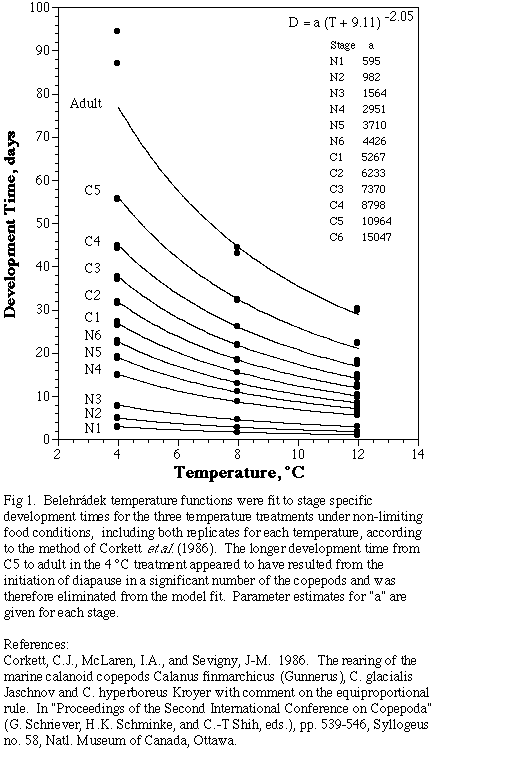
Bob Campbell, M. Wagner, G. Teegarden, C. Boudreau, and Ted Durbin,
Nitrogen and carbon specific growth rates and development rates were determined for individual stages of the copepod Calanus finmarchicus reared in replicate 100 l mesocosms at three temperatures (4, 8, and 12 C) under non-limiting food conditions (500 g C/l). In addition, growth and development rates were determined at three food concentrations (500, 50, and 25 g C/l) at 8 C. Carbon and nitrogen stage specific growth rates decreased with decreasing temperature and food concentration. Under non-limiting food conditions growth rates decreased with increasing stage of development, except for animals molting from the final naupliar stage to the first copepodite stage where growth rates were depressed. Carbon specific growth rates were greater than nitrogen specific growth rates and this difference increased with increasing stage of development which may indicate an augmentation in lipid deposition in the older stages. However, nitrogen and carbon growth rates were more similar under food limited conditions indicating that carbon growth rates were limited to a greater extent at the lower food levels. At high food levels development rates were equiproportional, but not isochronal. Naupliar stage durations were similar, except for non-feeding stages which were of short duration and the first feeding stage which was prolonged, while copepodite stage durations increased with increasing stage of development. Development times from egg to C5 at 50 and 25 g C/l were 1.4 and 1.8 times longer, respectively, than at non-limiting food conditions (500 g C/l) at 8 C. Belehrádek temperature functions derived from the laboratory development rates at non-limiting food conditions may be used to model Calanus finmarchicus population dynamics and assess the extent of food limitation of field populations (Figure 1).
